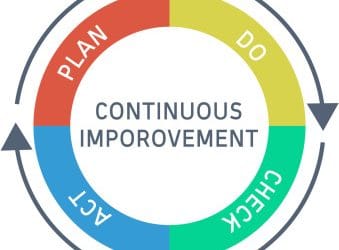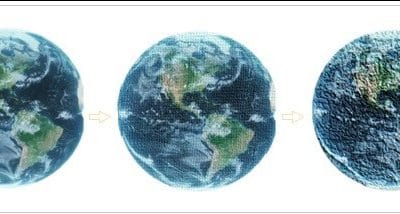The increasing demand for geospatial information in Nigeria has transformed how data is collected, stored, analyzed, and disseminated. Government agencies, research institutions, private companies, and NGOs now depend heavily on spatial data for land administration, environmental monitoring, disaster management, urban planning, and infrastructure development. Efficient management of these data resources requires robust structures, and the geodatabase has emerged as the most effective solution. This report explores the internal structure of a geodatabase, its role in organizing spatial data, and how it enhances efficiency and decision-making processes in Nigeria.
Understanding a Geodatabase
A geodatabase is a central repository designed to store, manage, and organize spatial and attribute data. Unlike traditional shapefiles or spreadsheets, geodatabases support integrated datasets, topologies, relationships, and advanced spatial models.
Key features of Geodatabase
The following are the key features of geodatabase:
- Stores vector, raster, and tabular data in a unified system.
- Maintains rules for data integrity (e.g., no overlapping parcels).
- Enables faster queries and spatial analysis.
- Supports multi-user editing and versioning in enterprise systems.
Types of Geodatabases
- Personal Geodatabase: This is designed for small projects using Microsoft Access.
- File Geodatabase: This has high-capacity storage suitable for medium- to large-scale projects.
- Enterprise Geodatabase: This supports large organizations with multi-user access and high-performance servers.
Organization of Spatial Data Inside a Geodatabase
Spatial data organization in a geodatabase follows structured layers and rules given as below:
Feature Datasets
- The feature datasets have logical containers for related feature classes,
- It ensures consistent coordinate systems and spatial references,
- Example Spatial data organization in a geodatabase: A “Transportation” dataset may include roads, railways, and airports.
Feature Classes
- Feature classes involve collections of similar geometry types (points, lines, polygons).
- Example: “Road Network” feature class for Nigerian highways and local roads.
Tables and Attribute Data
- Spatial data organization in a geodatabase store non-spatial information linked to spatial features.
- Example: A table with property ownership records linked to parcel polygons.
Relationships and Topology Rules
- They enforce spatial integrity (e.g., rivers must flow within watershed boundaries).
- The relationship classes link features across datasets (e.g., schools connected to administrative wards).
Raster Datasets
- In raster datasets satellite imagery, elevation models, and land cover classifications are stored for analysis.
- Raster datasets are critical for Nigeria’s flood risk mapping, urban expansion studies, and agricultural monitoring.
Indexing and Query Optimisation
- Geodatabases use spatial and attribute indexing for faster retrieval.
- Example: Querying all farmlands in Lagos or Abuja can be completed in seconds, compared to much longer with raw shapefiles.
Benefits of Organising Spatial Data in Geodatabase
Faster Results
- In geodatabase optimised queries improve performance for large datasets like Nigeria’s cadastral maps.
- Supports real-time decision-making in emergencies (e.g., flood response in Bayelsa or Anambra States).
Improved Data Integrity
- Topology rules prevent errors (e.g., overlapping land parcels in Abuja cadastral system).
- Reduces duplication and inconsistencies.
Multi-user Collaboration
- Enterprise geodatabase allows simultaneous access by surveyors, planners, and government agencies.
- Ensures consistency across institutions like the National Space Research and Development Agency (NASRDA) and State GIS agencies.
Scalability
- Scalability handles massive datasets from drones, satellites, and IoT sensors in agriculture and urban monitoring.
Integration with Decision Support Systems
- Links with GIS software, mobile apps, and web portals for public service delivery.
- Example: Lagos State Government’s Land Information System integrates geodatabase structures for faster land title verification.
Applications of Geodatabase in Nigeria
In Nigeria there are different areas which geodatabase can be applied and they include:
- Urban Planning: Efficiently storing and querying population density, infrastructure, and land-use maps in cities like Lagos, Abuja, and Port Harcourt.
- Cadastral and Land Administration: Nigerian cadastral maps rely on geodatabases to resolve land disputes, improve tenure security, and speed up land registration.
- Agriculture – Precision agriculture projects use geodatabases for crop monitoring and soil mapping in states like Kano and Kaduna.
- Disaster Management: Flood-prone areas in the Niger Delta are monitored using geodatabase-integrated models for early warning systems.
- Transportation Planning: Federal and state ministries employ geodatabases to manage road networks and monitor traffic congestion.
- Environmental Monitoring: Deforestation in Cross River State and desertification in the Sahel belt are tracked using spatial databases.
Challenges of Geodatabase Implementation in Nigeria
The following are the challenges of geodatabase implementation in Nigeria
- Limited Infrastructure: in Nigeria high-performance servers and cloud systems are costly.
- Capacity Gaps: Many agencies lack skilled GIS professionals.
- Data Sharing Barriers: Institutional silos prevent effective collaboration.
- Funding Constraints: Maintenance of geospatial databases requires long-term investment.
- Policy and Standardization Issues: there are absence of strong geospatial data infrastructure (NSDI) limits interoperability.
Conclusion
Inside a geodatabase lies a structured, efficient, and reliable framework for managing Nigeria’s rapidly growing spatial datasets. By organizing data into feature datasets, feature classes, rasters, and relational tables, geodatabases enable faster querying, better decision-making, and improved collaboration across institutions. While Nigeria faces challenges in infrastructure, training, and policy, the strategic adoption of geodatabases is critical for sustainable development, effective governance, and national competitiveness in the global geospatial economy.

Geodatabase structure for managing spatial data in Nigeria 2025


































































































